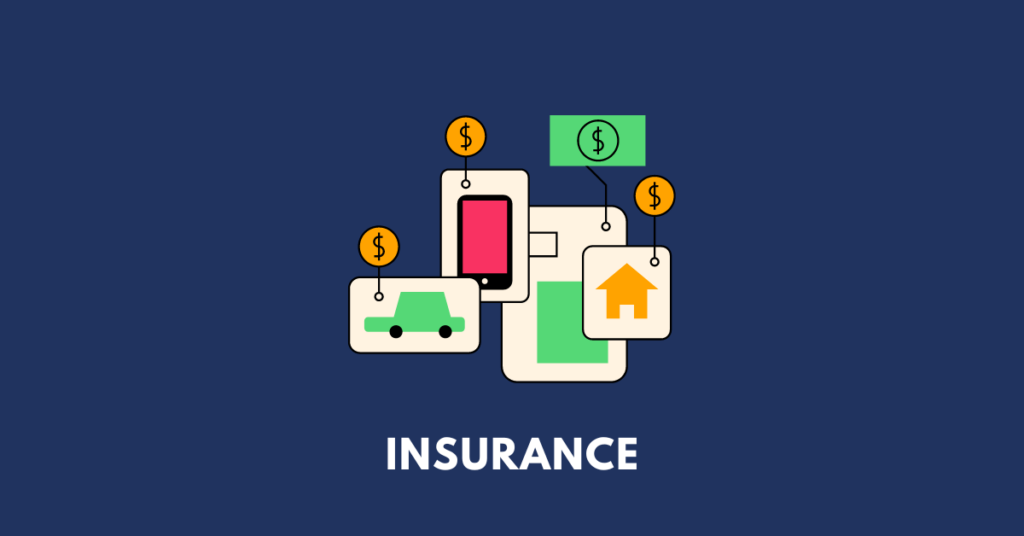
Here, you will find summaries, questions, answers, textbook solutions, pdf, extras etc. of (Nagaland Board) NBSE Class 10 Financial Literacy Chapter 4: Insurance. These solutions, however, should be only treated as references and can be modified/changed.
Summary
Insurance is a contract between two parties – the insurer and the insured – that aims to protect the value of an insured asset against potential loss or damage. It helps to reduce the effects of adverse situations by spreading the loss caused by a particular risk among a group of policyholders. The concept of insurance is based on the principles of cooperation and the theory of probability.
Insurance began in India in 1818, and the industry has evolved significantly over time. In 1956, life insurance business in India was nationalized, and the Life Insurance Corporation was established. To regulate and develop the insurance industry in India, the Insurance Regulatory and Development Authority (IRDA) was constituted in April 2000. With the opening of the market to private companies, competition increased, which led to enhanced customer satisfaction through increased consumer choice and lower premiums.
Insurance can be broadly classified into life insurance, general insurance, and social insurance based on the type of business. Life insurance covers risks related to human lives, while general insurance includes property insurance, liability insurance, and other forms such as errors and omissions insurance for professionals, credit insurance, etc. Social insurance refers to government-sponsored insurance programs, which offer pension plans, disability benefits, unemployment benefits, sickness insurance, and industrial insurance.
On the basis of risk, insurance can be further categorized into property insurance, liability insurance, and other forms of insurance. Property insurance covers the risk of loss or damage to property due to specified risks, such as fire or theft. Liability insurance transfers the responsibility of paying compensation to the insurance company when the insured causes loss or damage to another person. Other forms of insurance include export-credit insurance, state employee insurance, and more.
Insurance functions by providing certainty, protection, and risk-sharing among policyholders. The certainty of payment is ensured when a loss occurs, and protection is provided against the probable chances of loss. The risk-sharing mechanism is based on collecting adequate funds (premiums) from the members of a group to compensate for the loss experienced by any member when the insured risk occurs.

Textual questions and answers
Choose the correct answer.
1. Insurance protects the
Answer: (b) Value
2. Insurance helps to ____ of any insured asset.
Answer: (b) Reduce
3. Insurance is a contract between ____ Parties.
Answer: (a) Two
4. The year in which insurance business was started in India is
Answer: (c) 1818
5. The person who takes the insurance is called as
Answer: (b) Insured
Fill in the blanks (can be included in exams as MCQs).
1. Any item of economic value can also be known as ______.
Answer: an asset
2. An asset is valuable to the owner, because he expects to get ______ from it.
Answer: benefits
3. Insurance tries to spread the loss caused by a particular risk ______ the group.
Answer: among
4. Mr. Raj takes an insurance policy on his two wheeler for an amount of ₹50,000 and his vehicle got damaged. The actual value of damage is 4,000. Now, Mr. Raj can claim ______ from the insurance company.
Answer: ₹4,000
5. Funds collected from the persons who take insurance is known as ______.
Answer: premium
Extra/additional questions and answers (MCQs)
1. Insurance is defined as a co-operative device to spread the loss caused by a particular _____ over a number of persons who are exposed to it and who agree to ensure themselves against that risk.
A. Asset B. Risk C. Benefit D. Contract
Answer: B. Risk
2. In an insurance contract, the party called the insurer undertakes to pay the other party, the insured, in exchange for a fixed sum called _____.
A. Benefit B. Payment C. Premiums D. Compensation
Answer: C. Premiums
Answer: A. Risk
36. Which of these is not a function of insurance?
A. Providing certainty B. Providing protection C. Risk-sharing D. Risk elimination
Answer: D. Risk elimination

Ron’e Dutta is a journalist, teacher, aspiring novelist, and blogger. He manages Online Free Notes and reads Victorian literature. His favourite book is Wuthering Heights by Emily Bronte and he hopes to travel the world. Get in touch with him by sending him a friend request.
Get notes of other boards, classes, and subjects